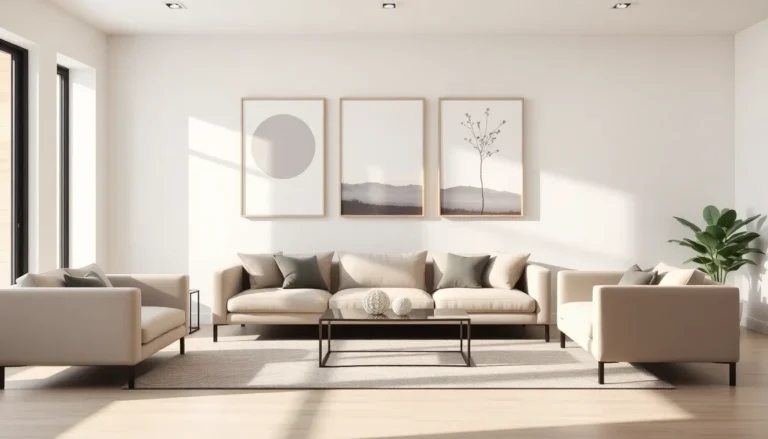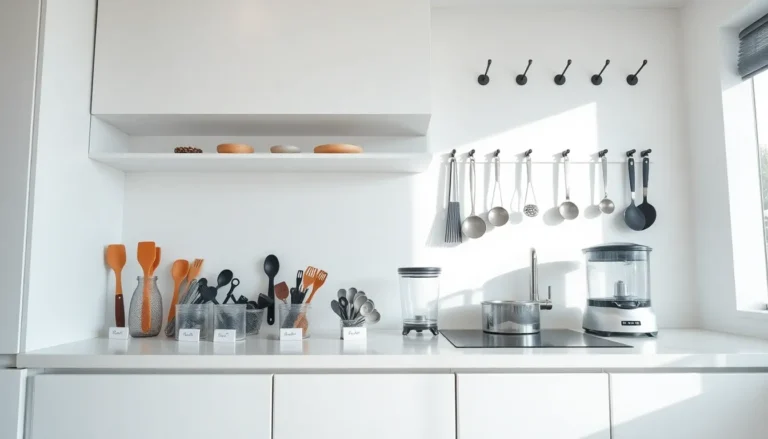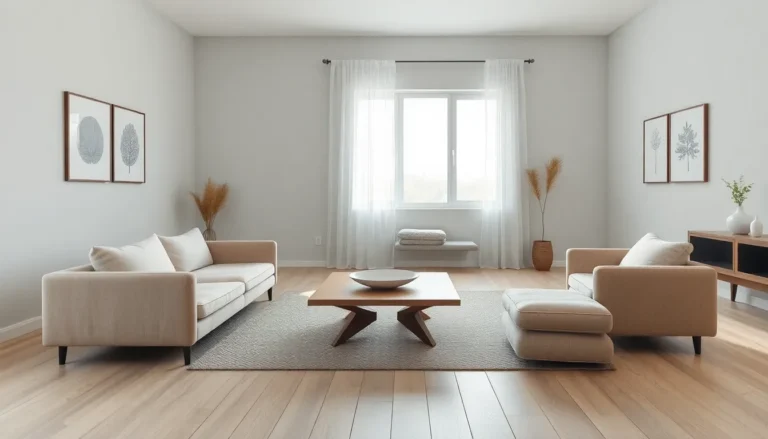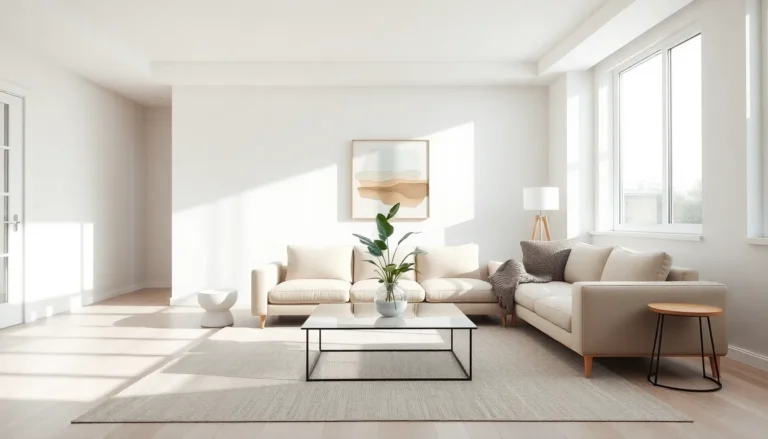In a world filled with complexity, simple interior design offers a refreshing escape. It emphasizes clean lines, minimal clutter, and a focus on functionality, creating spaces that breathe tranquility and harmony. This design approach is perfect for those who crave a serene environment without sacrificing style.
Embracing simplicity in interior design can transform any space into a sanctuary. With thoughtfully chosen colors and textures, it enhances natural light and fosters an inviting atmosphere. Whether it’s a cozy apartment or a spacious home, simple design principles can elevate everyday living, making it more enjoyable and less stressful. Discover how to incorporate these elements into your own space and unlock the beauty of simplicity.
Table of Contents
ToggleWhat Is Simple Interior Design?
Simple interior design embodies the principles of minimalism, emphasizing a modest aesthetic combined with functionality. It prioritizes clean lines, neutral color palettes, and unsophisticated furnishings, creating spaces that exude calmness and clarity.
Simple interior design minimizes visual clutter, allowing essential elements to stand out. It encourages the use of natural materials, such as wood and stone, to enhance warmth and texture without overwhelming the senses. This design style also values open spaces, often incorporating furniture arrangements that promote fluid movement and interaction.
The concept of simple interior design extends to thoughtful details, where each piece serves a purpose, contributing to an overall sense of tranquility. By focusing on these elements, simple interior design fosters environments that invite relaxation, making them ideal for everyday living.
Key Principles of Simple Interior Design
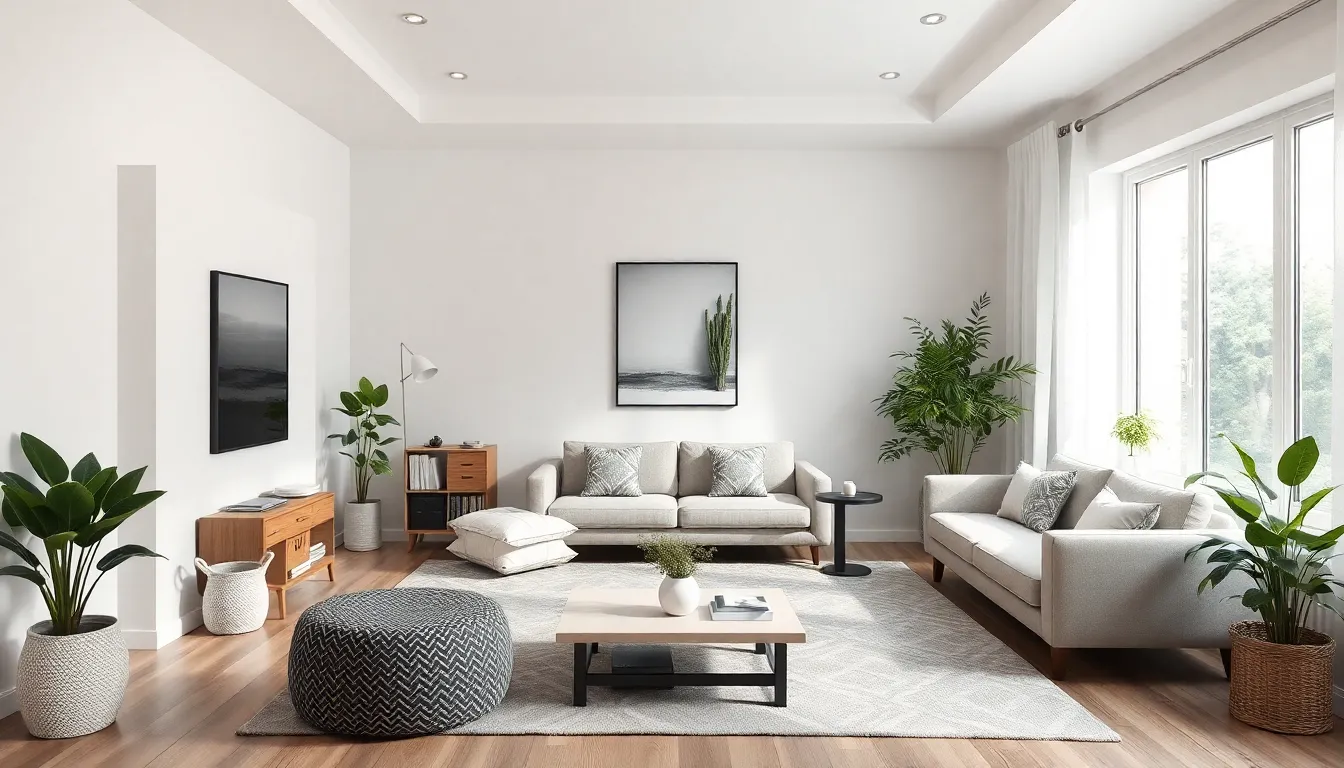
Simple interior design revolves around a few key principles that prioritize cleanliness, functionality, and aesthetic harmony. By understanding these principles, individuals can create tranquil spaces that promote relaxation and ease.
Minimalism and Functionality
Minimalism emphasizes simplicity by reducing unnecessary elements. This design approach embraces functionality, ensuring every piece serves a purpose. For example, using multipurpose furniture like sofas with storage or tables that can extend helps maintain clarity while maximizing space. Additionally, a neutral color palette allows furniture and decor to complement rather than overwhelm. This focus on utility prevents clutter, enabling a serene environment that feels both open and practical.
Balance and Harmony
Balance and harmony play crucial roles in simple interior design. Achieving balance involves distributing visual weight evenly across a space. For instance, pairing larger furniture pieces with smaller accents creates a cohesive look. Harmony comes from using compatible colors, textures, and shapes, ensuring all elements work together. Incorporating elements like plants or natural materials introduces organic shapes, enriching the space while maintaining an overall calmness. This synergy enhances the flow between different areas, fostering a welcoming atmosphere.
Choosing a Color Palette
A well-chosen color palette can enhance the tranquil and harmonious qualities of simple interior design. Selecting colors that evoke calmness and clarity contributes to a serene living environment.
Neutral Tones
Neutral tones serve as the foundation for simple interior design. These colors include shades such as white, beige, gray, and taupe. Each tone creates a backdrop that promotes spaciousness and tranquility. By using neutral tones, it becomes easier to balance light and dark elements within a room. They coordinate well with natural materials, enhancing warmth and texture. This palette invites versatility, allowing various furnishings and decor elements to shine without overwhelming the space.
Accent Colors
Accent colors add personality and interest to neutral palettes. Careful selection creates focal points that draw the eye and enhance design cohesion. Common accent colors include muted greens, soft blues, and gentle yellows. These colors can appear in artwork, throw pillows, or decorative objects, enriching the overall aesthetic. Limiting accent colors to one or two helps maintain simplicity while ensuring a vibrant touch. Incorporating accent colors strategically stimulates a welcoming atmosphere without compromising minimalistic principles.
Essential Furniture Pieces
Essential furniture pieces contribute significantly to achieving the goals of simple interior design. These items prioritize functionality, comfort, and a modest aesthetic.
Multi-Functional Furniture
Multi-functional furniture maximizes space efficiency in simple interior design. Examples include sofa beds, ottomans with storage, and extendable dining tables. These pieces serve multiple purposes, reducing clutter and enhancing usability. Choosing modular furniture also allows for flexibility, adapting easily to changing needs and preferences. Incorporating such items fosters a seamless connection between different areas of a room while maintaining an open and airy feel.
Timeless Designs
Timeless designs anchor simple interior spaces with enduring appeal. Classic silhouettes and understated forms characterize these pieces, promoting longevity in style and functionality. Examples include mid-century modern chairs, Scandinavian-inspired tables, and minimalist benches. Such furnishings blend effortlessly with various decor styles, ensuring visual harmony. Durability and quality materials, like solid wood or metal, enhance the resilience of these designs, offering both practicality and aesthetic value over time.
Tips for Achieving Simple Interior Design
Achieving simple interior design involves thoughtful strategies that prioritize clarity and functionality. Here are effective tips to create serene and harmonious spaces.
Decluttering and Organizing
Decluttering serves as the foundation for simple interior design. Remove unnecessary items to create a clean and open environment. Implement storage solutions like baskets and shelves to organize belongings efficiently, ensuring every object has a designated space. Regularly evaluate items to maintain minimalism, keeping only essentials that contribute to overall functionality and aesthetic harmony. Clear surfaces, like tables and counters, foster a serene atmosphere, inviting tranquility into daily life.
Incorporating Nature
Incorporating nature enriches simple interior design with warmth and texture. Use natural materials like wood, stone, and linen for furniture and decor to create a connection with the outdoors. Select plants that thrive in indoor environments, such as snake plants or pothos, to add vibrancy and improve air quality. Natural light enhances the space, so maximize windows and consider sheer curtains to maintain openness. Integrating these elements promotes a calm and welcoming environment while reinforcing the simplicity that characterizes this design style.
Embracing simple interior design can profoundly impact daily life. By prioritizing clarity and functionality, individuals can create spaces that promote relaxation and well-being. The principles of minimalism not only enhance aesthetics but also foster an inviting atmosphere.
Incorporating natural elements and a carefully curated color palette adds warmth and character without overwhelming the senses. With multi-functional furniture and smart organization, anyone can achieve a serene sanctuary that reflects personal style while minimizing stress.
Ultimately, simple interior design is about creating an environment that nurtures peace and harmony, making everyday living a more enjoyable experience.




